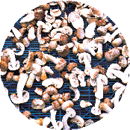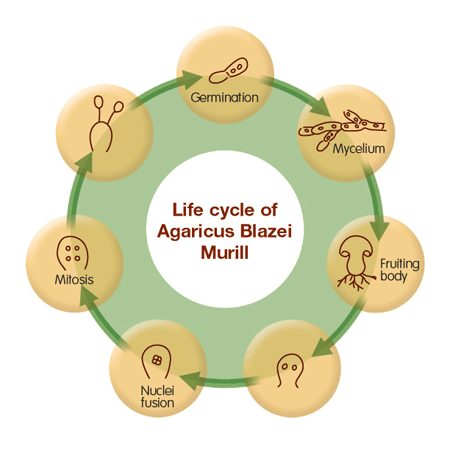 |
| |
Agaricus blazei murill originates from Piedade, in the suburbs of Sao Paulo, Brazil. During the 60's, a team of American scientists found that the rate of occurrence of adult diseases such as cancer, hepatitis, high blood pressure, diabetes..... etc is extremely low in this area. This phenomenon was explained to be the fact that the Piedade habitants consumed agaricus in their regular diet.
As the efficacies of Agaricus Blazei Murill were proven by an ever-increasing number of scientific and clinical reports, the demand for Agaricus Blazei Murill became so huge that local production can no longer fulfill. |
|
| Despite early efforts to cultivate Agaricus Blazei Murill abroad, it proved to be extremely difficult to mimic the specific climatic conditions of Piedade. Temperatures soar to 35oC during the day and dip to between 20oC and 25oC at night with humidity average 80%. Wild Agaricus Blazei Murill usually grow in soil fertilized by the faeces of untamed horses. Until recent 10 years, artificial cultivation was finally achieved in Japan through painstaking trial and error. Since then, the supply of Agaricus Blazei Murill became more secure. |
 |
 |
|
| |
Since the absorbing power of fungi is so robust that any trace of nutrient accessible in their surroundings would be soaked up, it is imperative to ensure the environment in which agaricus grow to be free from any kind of contaminants like industrial wastes, heavy metals, DDT, PCB ...etc. Otherwise, these toxic substances would easily be accumulated. Therefore, the location of the farms in which Agaricus Blazei Murill is being cultivated is crucial. It is desirable for the farms to be situated in places that are 100% natural wherever water, earth, air ...etc are pollutant free.
There are currently many farms cultivating Agaricus Blazei Murill in Japan, China and Korea. They usually market agaricus as dehydrated mushrooms. It is worth noting that some of these agaricus contain an abundance of pesticides and heavy metals (the heavy metal content of some of the samples even exceed the Hong Kong Health Department permitted limit by 400 times). |
|
 |
|
|
|
|